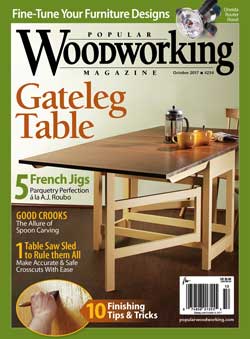
My article on building a Mackintosh Tea Table appears in the October 2017 issue of Popular Woodworking.
The current issue of Popular Woodworking features my article on building the Mackintosh tea table with measured drawings and cut list.


My article on building a Mackintosh Tea Table appears in the October 2017 issue of Popular Woodworking.
The current issue of Popular Woodworking features my article on building the Mackintosh tea table with measured drawings and cut list.
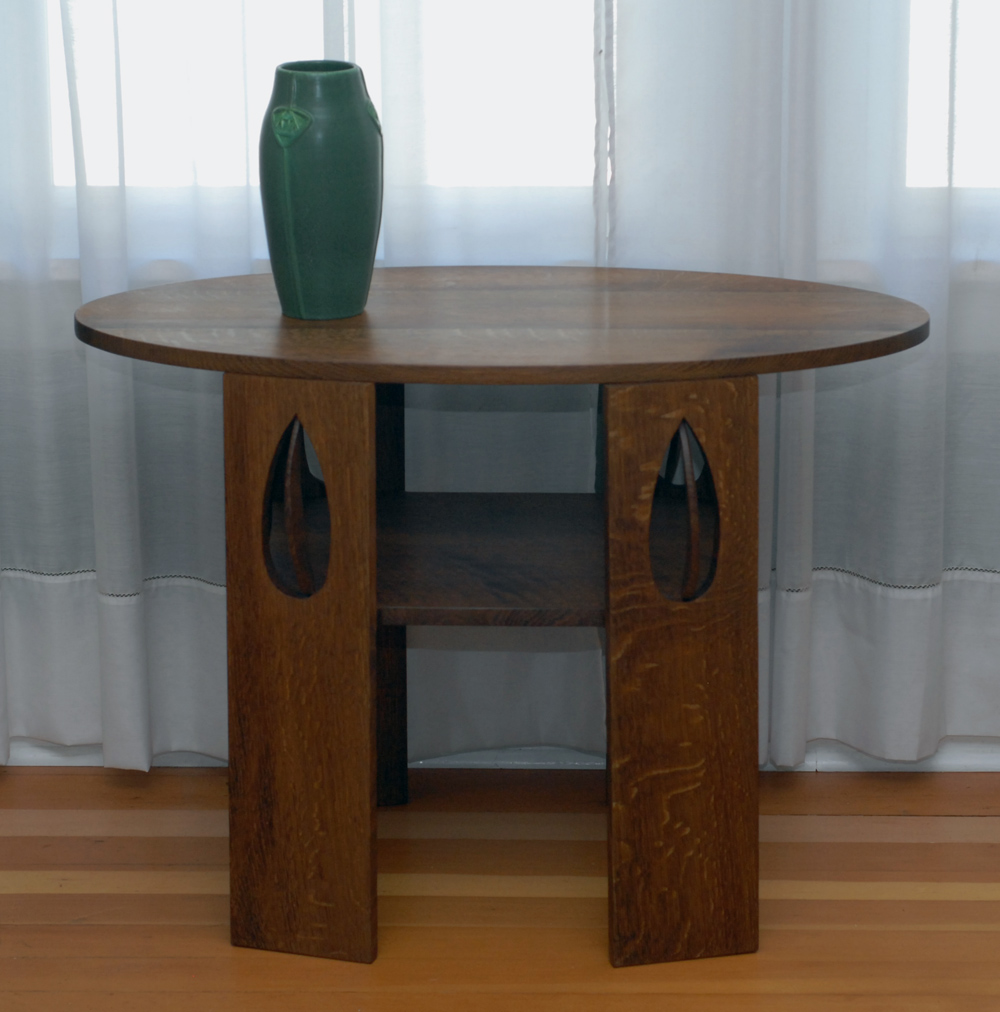
The carved leaves present the greatest joinery challenge in this reproduction of a Mackintosh tea table design.
Reproduced in quarter sawn white oak, this tea table designed by Charles Rennie Mackintosh shows its art nouveau and Arts & Crafts roots, perhaps mores than in the original’s white painted finish. The carved leaves are the most daunting aspect of the build; otherwise construction relies on dadoes and half-blind dovetails. Patterns for the shelf, top, and cutouts help make quick work of repetitive actions.
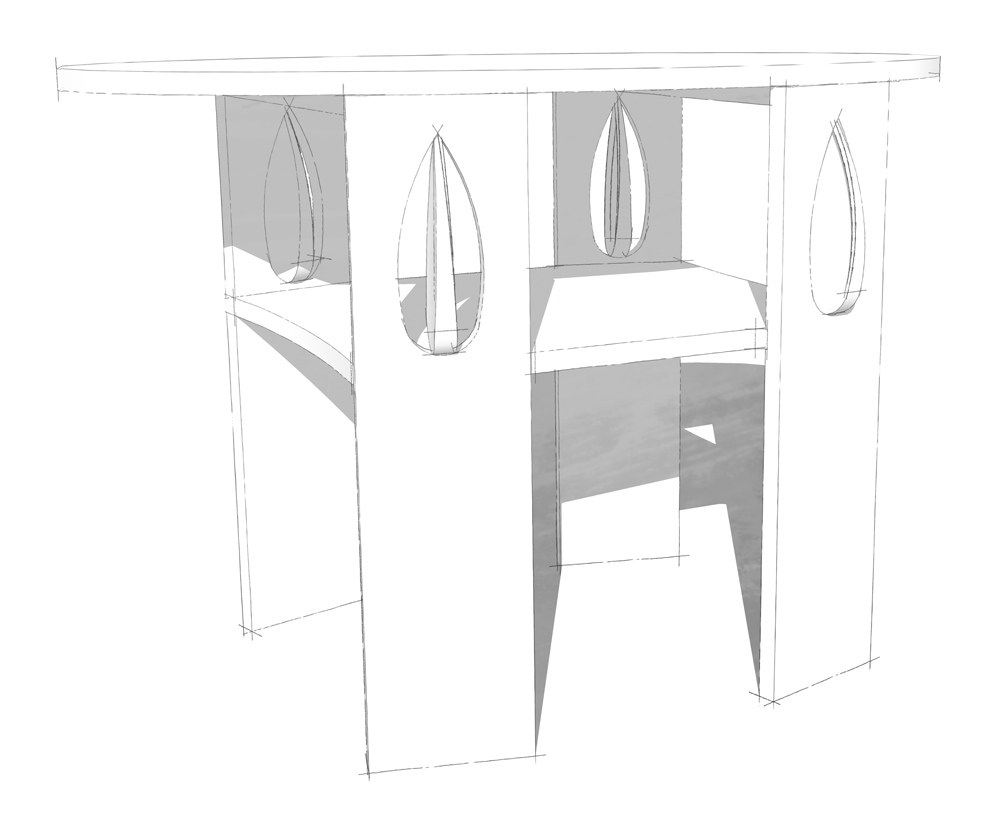
Mackintosh’s design for a tea table features an elliptical top over a base with four slatted legs. Set to follow the curve of the top, the legs feature carved leaves set in cutouts.
In a world where living room furniture is often designed around the TV, a tea table can seem an anachronism. Shorter than a dining table, they provided a space for conversation over tea. Today they can still serve for intimate dining or largish occasional tables. This design by the Scottish Architect Charles Rennie Mackintosh features an elliptical top over a base with four slatted legs. The legs are set at an angle relative to the base so that they appear to follow the curve of the top. Cutouts frame carved leaves, an organic embellishment showing an art nouveau influence.
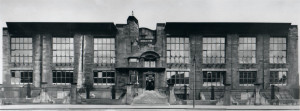
Mackintosh designed the Glasgow School of Art in two phases. This archival photo from the GSA’s collection shows it after completion of the second phase.
Although it met with mixed reviews upon its completion in 1909, Mackintosh’s design for the Glasgow School of Art is now generally regarded as his masterpiece. Built in two phases, it bookends the peak of his creativity. Today later construction has crowded the building, so it is interesting to see it captured, as in this photo from the School’s archive, in its original context.
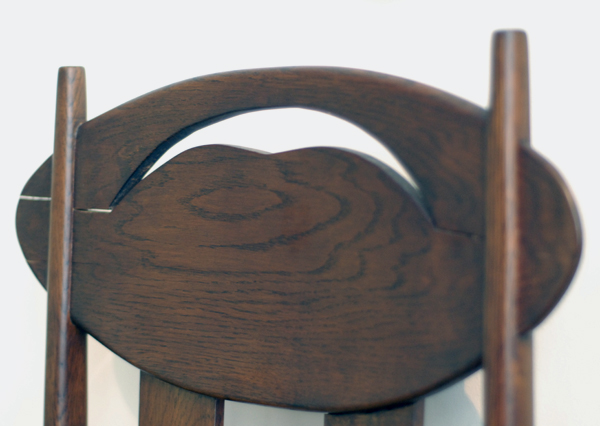
Though time hasn’t been kind to this example of Mackintosh’s side chair for the Argyle Street Tea Room, the back still shows a high degree of work, including the cutout and pierced and curved stiles.
I was in Glasgow recently to take a look at the furniture of Charles Rennie Mackintosh. I began my tour at The Lighthouse, Mackintosh’s first public commission for the Glasgow Herald. The building has been reimagined as a gallery and museum, featuring a fine overview of Mackintosh’s work (and spectacular view of the city from its repurposed water tower. This example of Mackintosh’s design for a side chair for Catherine Cranston’s Argyle Street Tea Room shows its age in the cracked back, but age doesn’t diminish the distinction of the design. The cutout evoking a bird in flight shows an Art Nouveau influence, and the high back creates a strong impression of verticality while also fostering an air of intimacy around the table. Having sat at in one of these at the Tea Room, I can report the design is more attractive than comfortable.
See the side chair in the Museum of Modern Art’s online collection.
I went outside early one morning a few weeks ago to put the outgoing mail in the box and found an anonymous copy of Roger Billcliffe’s Mackintosh Furniture there. The mystery resolved itself a couple of days later, but not before I had ample cause to thank my then anonymous donor. I’ve long admired Mackintosh’s furniture (and Kevin Rodel’s reinterpretations) for their use of negative and positive space and the way they synthesize Arts & Crafts, Art Noveau, and early Modern impulses, and Billcliffe does Mackintosh’s work justice, tracing its development in chronological order from the late 19th century through 1920.
Billcliffe considers Mackintosh’s furniture in the context of his architectural work, providing detailed verbal descriptions of Mackintosh’s buildings and renovations. And it is in these extended passages that I found my attention wandering, wishing for illustrated floorplans. Too, Billcliffe seems overly invested in defending Mackintosh’s reputation, but these factors can’t detract from the true appeal of the book, the lavish collection of black-and-white photographs documenting Mackintosh’s furniture design. Mackintosh’s most popular designs—including tall chairs and the Hill House hall table and chairs—are well represented, but the book also documents pieces I’d never seen before, from writing cabinets to beds and built-ins. I haven’t read widely in the field, so I can’t speak to how well Billcliffe’s work compares to other books on Mackintosh, but I know I enjoyed it and will return to again when I’m looking for inspiration.
Used copies of Mackintosh Furniture are available in hardback or paperback on Amazon.
Like the dry sink, the washstand has been supplanted by indoor plumbing–who needs a washstand when they have a private bath?–but I can’t help but think about repurposing this design to fit contemporary needs. Rodel reimagined it as a serving table, but it would also work as a sink base with little modification, either with the plumbing exposed below the open counter, or with cabinets enclosing the base.